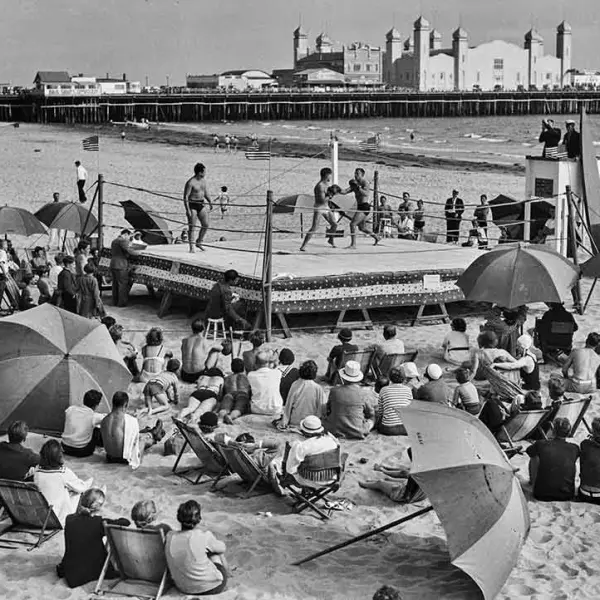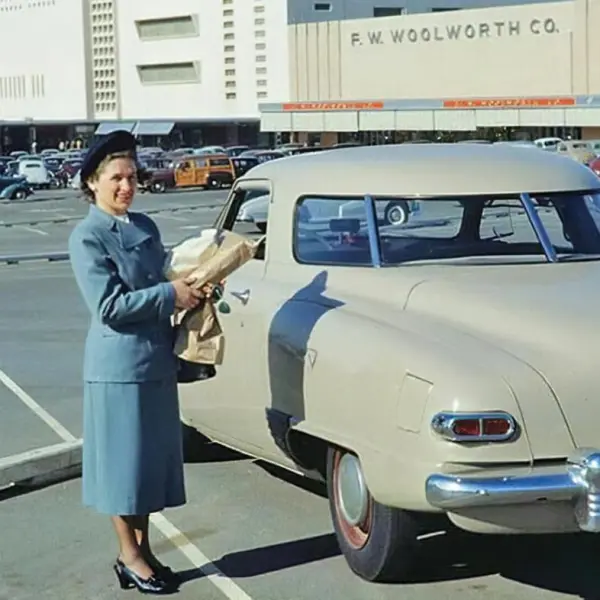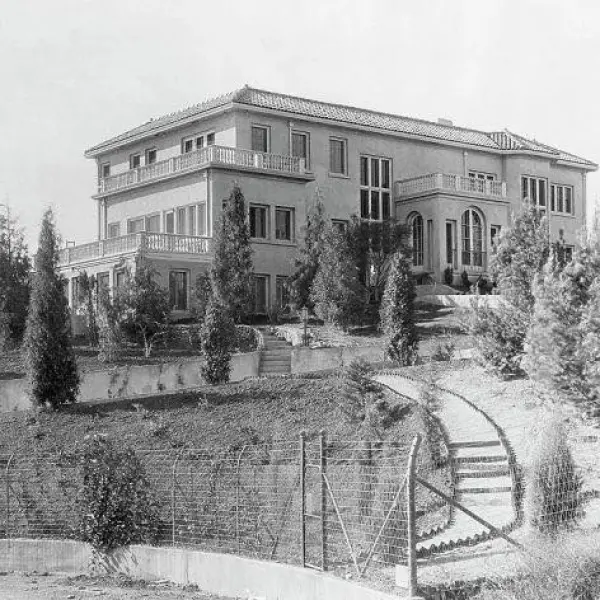Hughes H-4 Hercules
The Hughes H-4 Hercules, famously known as the "Spruce Goose," is one of the most iconic aircraft in aviation history. It was a massive wooden flying boat designed and built by the Hughes Aircraft Company during World War II, under the direction of Howard Hughes. Here’s a detailed rundown:
Background
Purpose: The H-4 was conceived as a response to the need for a large cargo and troop transport aircraft that could bypass the threat of German U-boats sinking Allied ships in the Atlantic during the war. Metal was scarce due to wartime demands, so the plane was constructed primarily of wood—specifically birch, not spruce, despite its nickname.
Contract: In 1942, the U.S. War Department awarded a contract to Hughes and his partner, Henry Kaiser, to build the aircraft. Kaiser later withdrew from the project, leaving Hughes to spearhead it.
Design and Specifications
Size: The H-4 Hercules remains the largest flying boat ever built and had the widest wingspan of any aircraft at the time—320 feet, 11 inches (97.54 meters). That record stood until 2019 when the Stratolaunch aircraft surpassed it.
Weight: It had a maximum takeoff weight of around 400,000 pounds (180,000 kg).
Power: It was equipped with eight Pratt & Whitney R-4360 Wasp Major radial engines, each producing 3,000 horsepower, making it incredibly powerful for its era.
Construction: The airframe was made using a process called "Duramold," which layered thin sheets of wood with resin to create a strong, lightweight structure. This was innovative but also controversial due to doubts about wood’s durability for such a massive plane.
Capacity: It was designed to carry 750 fully equipped troops or two 30-ton M4 Sherman tanks across the Atlantic.
Development Challenges
Delays: The project faced significant setbacks, including Hughes’ perfectionism, wartime material restrictions, and skepticism from critics who dubbed it impractical. It wasn’t completed until 1947—two years after the war ended—rendering its original purpose obsolete.
Cost: The plane cost about $23 million (roughly $300 million in today’s dollars), funded partly by the government and partly by Hughes himself. This led to intense scrutiny and accusations of mismanagement.
The Famous Flight
Date: November 2, 1947.
Event: The H-4 made its one and only flight in Long Beach Harbor, California. Howard Hughes personally piloted it during what was supposed to be a taxi test to prove its airworthiness to a skeptical Congress and press.
Flight Details: It flew for about 26 seconds, reaching an altitude of 70 feet (21 meters) and covering roughly 1 mile (1.6 km) at a speed of 135 mph (217 km/h). Hughes lifted off unexpectedly, later claiming it was to demonstrate the plane’s capability.
Outcome: This brief flight silenced some critics but didn’t lead to production. The war was over, and jet aircraft were already revolutionizing aviation.
Legacy
Storage: After its flight, Hughes kept the H-4 in a climate-controlled hangar, maintaining it in flying condition at great personal expense until his death in 1976. It never flew again.
Preservation: Today, it’s housed at the Evergreen Aviation & Space Museum in McMinnville, Oregon, where it’s a centerpiece attraction.
Cultural Impact: The Spruce Goose symbolizes both engineering ambition and the eccentric genius of Howard Hughes. It’s been featured in films, books, and even inspired a scene in The Aviator (2004), where Leonardo DiCaprio portrays Hughes.
Fun Facts
The "Spruce Goose" nickname was coined by the press and reportedly annoyed Hughes, who insisted it was a misnomer due to the use of birch.
Its wingspan is still longer than a Boeing 747-8’s, though modern planes far exceed it in other metrics.
The H-4 Hercules stands as a testament to human ingenuity, even if it was more a marvel of its time than a practical solution. What aspect of it interests you most?
Background
Purpose: The H-4 was conceived as a response to the need for a large cargo and troop transport aircraft that could bypass the threat of German U-boats sinking Allied ships in the Atlantic during the war. Metal was scarce due to wartime demands, so the plane was constructed primarily of wood—specifically birch, not spruce, despite its nickname.
Contract: In 1942, the U.S. War Department awarded a contract to Hughes and his partner, Henry Kaiser, to build the aircraft. Kaiser later withdrew from the project, leaving Hughes to spearhead it.
Design and Specifications
Size: The H-4 Hercules remains the largest flying boat ever built and had the widest wingspan of any aircraft at the time—320 feet, 11 inches (97.54 meters). That record stood until 2019 when the Stratolaunch aircraft surpassed it.
Weight: It had a maximum takeoff weight of around 400,000 pounds (180,000 kg).
Power: It was equipped with eight Pratt & Whitney R-4360 Wasp Major radial engines, each producing 3,000 horsepower, making it incredibly powerful for its era.
Construction: The airframe was made using a process called "Duramold," which layered thin sheets of wood with resin to create a strong, lightweight structure. This was innovative but also controversial due to doubts about wood’s durability for such a massive plane.
Capacity: It was designed to carry 750 fully equipped troops or two 30-ton M4 Sherman tanks across the Atlantic.
Development Challenges
Delays: The project faced significant setbacks, including Hughes’ perfectionism, wartime material restrictions, and skepticism from critics who dubbed it impractical. It wasn’t completed until 1947—two years after the war ended—rendering its original purpose obsolete.
Cost: The plane cost about $23 million (roughly $300 million in today’s dollars), funded partly by the government and partly by Hughes himself. This led to intense scrutiny and accusations of mismanagement.
The Famous Flight
Date: November 2, 1947.
Event: The H-4 made its one and only flight in Long Beach Harbor, California. Howard Hughes personally piloted it during what was supposed to be a taxi test to prove its airworthiness to a skeptical Congress and press.
Flight Details: It flew for about 26 seconds, reaching an altitude of 70 feet (21 meters) and covering roughly 1 mile (1.6 km) at a speed of 135 mph (217 km/h). Hughes lifted off unexpectedly, later claiming it was to demonstrate the plane’s capability.
Outcome: This brief flight silenced some critics but didn’t lead to production. The war was over, and jet aircraft were already revolutionizing aviation.
Legacy
Storage: After its flight, Hughes kept the H-4 in a climate-controlled hangar, maintaining it in flying condition at great personal expense until his death in 1976. It never flew again.
Preservation: Today, it’s housed at the Evergreen Aviation & Space Museum in McMinnville, Oregon, where it’s a centerpiece attraction.
Cultural Impact: The Spruce Goose symbolizes both engineering ambition and the eccentric genius of Howard Hughes. It’s been featured in films, books, and even inspired a scene in The Aviator (2004), where Leonardo DiCaprio portrays Hughes.
Fun Facts
The "Spruce Goose" nickname was coined by the press and reportedly annoyed Hughes, who insisted it was a misnomer due to the use of birch.
Its wingspan is still longer than a Boeing 747-8’s, though modern planes far exceed it in other metrics.
The H-4 Hercules stands as a testament to human ingenuity, even if it was more a marvel of its time than a practical solution. What aspect of it interests you most?
Aircraft
Airfield
Airliner
Airplane
Airport
Architecture
Boat
Building
Cityscape
Nature
Outdoors
Sea
Transportation
Urban
Vehicle
Water
Waterfront
Contributed by OldPik on February 9, 2025
Image

You must be logged in to comment on the photos.
Log in
Log in
Nearby photos
Walt Disney winning the Academy Award for Best Live Action Short Film for Water Birds














No comment yet, be the first to comment...